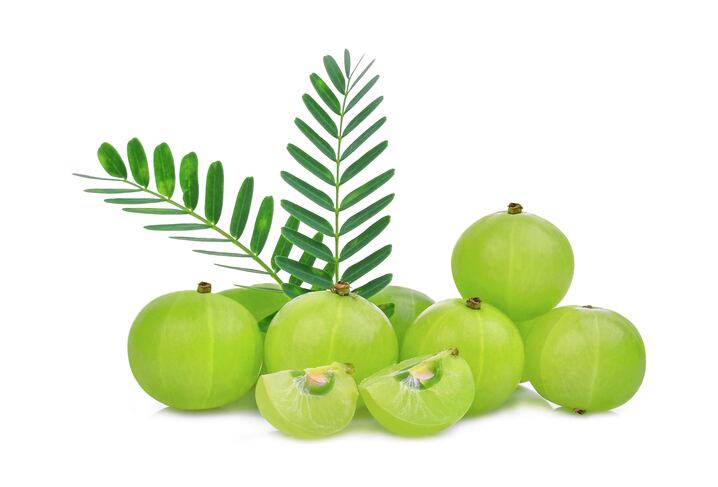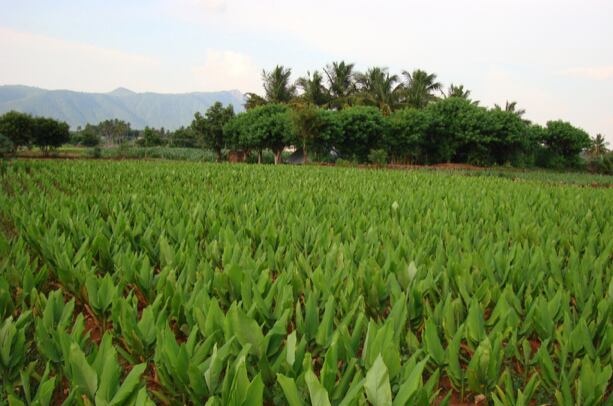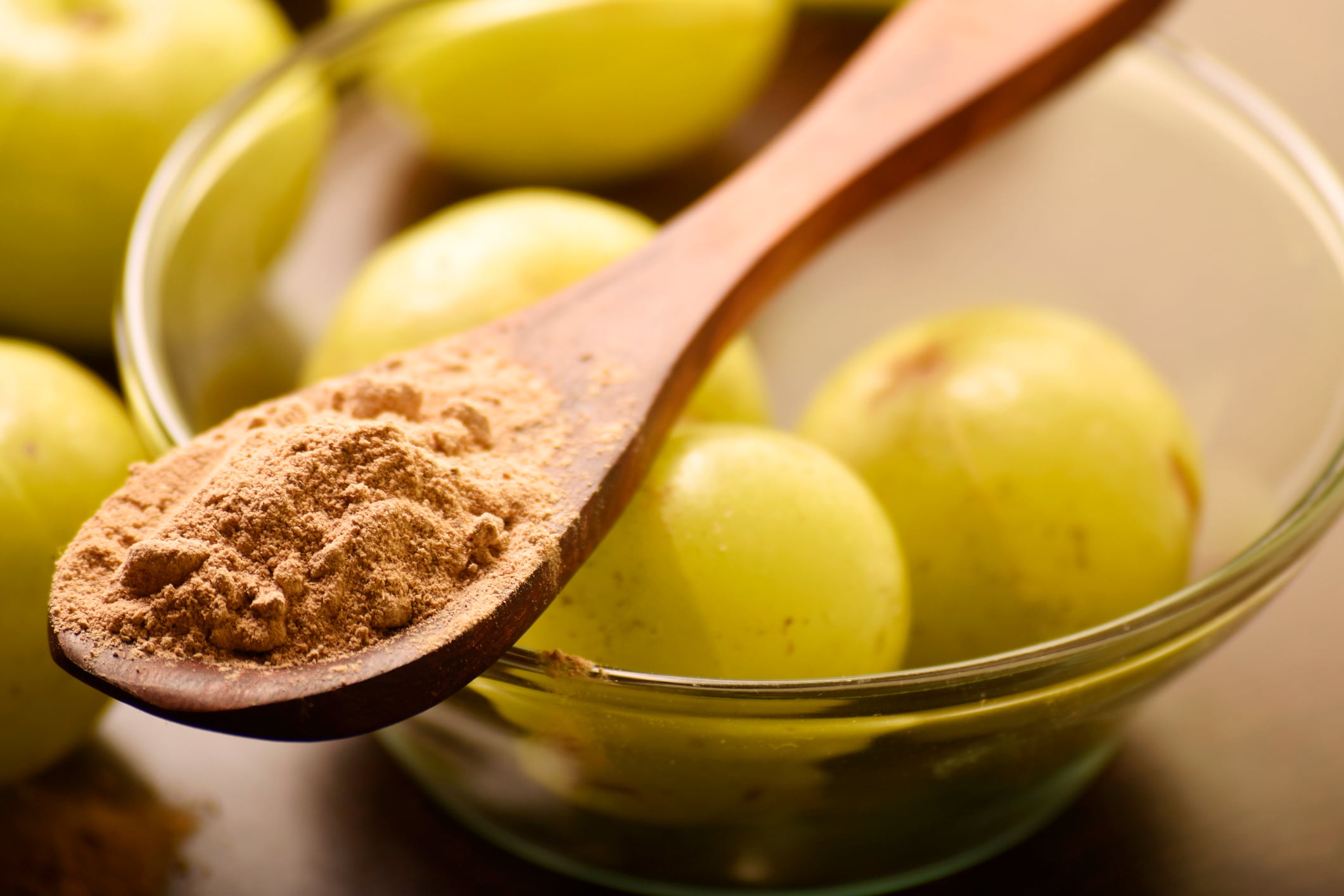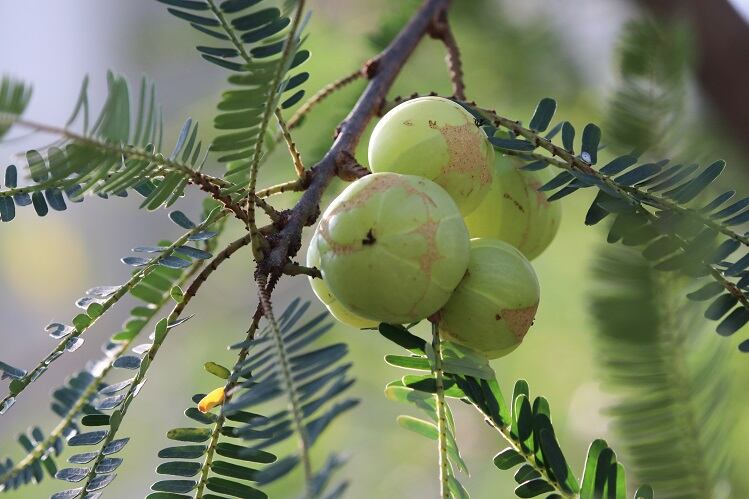Several months ago Sabinsa fired the opening salvo in the affair by releasing test results of amla ingredients the company had purchased from the market. Sabinsa’s point of view is that amla (Phyllanthus emblica or Emblica officinalis Gaertn., commonly known as Indian gooseberry) has many acidic, bioactive chemical constituents but has only trace amounts of Vitamin C.
Amla once touted as pinnacle of Vitamin C potential
The view of amla has become sharply divided over the years. The early story of amla—the fruits of which are borne on a sizable tree native to South Asia—as an exceptionally rich source of Vitamin C reportedly started in the United States with none other than Nobel laureate Linus Pauling himself. According to sources in the nutrition industry, during his early years of advocacy for high daily doses of Vitamin C, Pauling stated that amla was one of the richest naturally occurring sources of this critical nutrient.
This view was common back in the day. According the reference work ‘The Wealth of Indian Raw Material, Vol. III,’ by B.N. Sastri and published in 1955, amla was then regarded as one of the richest sources of Vitamin C. A paper published in 1997 seemed to agree with this view, finding between 3mg/gram and 3.7mg/gram of Vitamin C in two amla varieties tested that formed the basis of an Ayurvedic preparation.
This view of the ingredient still persists among some experts in the botanical trade. A 2018 report on an assay done on extracts of locally available fruit in Sri Lanka found amla (which the researchers called Phyllanthus emblica ‘local’) the most Vitamin C dense of the fruits they tested.
View changes with results of more recent assays
Yet the Linus Pauling Institute itself no longer lists the botanical as a good source of Vitamin C. The institute lists on its website a number of other foods, such as kiwifruit, oranges, grapefruit, peppers and Brussels sprouts, but not amla.
A number of experts have opined that high Vitamin C view of amla had perhaps mistakenly been taken as gospel and had been repeated so often over the years that it became the common view of the ingredient. The thinking here is that some early, less sophisticated assays miscounted some of the other acidic constituents in the fruit as Vitamin C.
Sabinsa sits squarely in this camp. The company said that from its long history with the ingredient via the development of its branded Saberry form, it was satisfied that the actual makeup of the ingredient could not support a high Vitamin C claim.
Sabinsa’s view: High Vitamin C amla ingredients contain added Vitamin C
The company claimed its tests results of several months ago on competing ingredients applied a methodology that could distinguish between ‘natural’ Vitamin C and commercially available ascorbic acid that had been added later. (It should be noted that both forms of Vitamin C are equally effective and identical in terms of safety, so the issue is one of label accuracy.)
Sabinsa claimed those tests results proved that the high claim amla ingredients had been augmented in this way. One analytical chemist who looked at Sabinsa’s results at NutraIngredients-USA’s request said from his preliminary judgement, the method the company used appeared to be sound.
Cease and desist letter
Sabinsa has now dialed up the pressure via a cease and desist letter sent to AFS, which claims its amla ingredient has 25% Vitamin C. Sabinsa asserts that this claim will “mislead and deceive consumers and constitute unfair competition and false advertising under applicable law.”
“As we stated in the cease & desist letter, we welcome competition when it is fair and not likely to mislead consumers, however, suppliers who blend fermentation-derived vitamin C with amla extract to claim a high amount of vitamin C must disclose it,” said Sabinsa founder and chairman Dr. Muhammed Majeed.
“As we’ve done in the past taking action against suppliers selling synthetic curcumin labeled as turmeric extract, so too will we be relentless in protecting the integrity of the amla market,” he added.
AFS categorically rejects Sabinsa’s assertion
AFS for its part is not backing down. Brian Zapp, creative director for the company, forwarded this statement on to NutraIngredients-USA:
“AFS stands behind each and every one of its claims for PurC organic vitamin C from amla. AFS expressly denies, in their entirety, the allegations that any of its advertising for PurC is false or misleading. It is categorically untrue that the source of vitamin C in AFS’ PurC is anything other than from amla fruit and AFS can verify those claims with clear, empirical documentation. Sabinsa’s suppositions are clearly flawed in this matter.”
Finished product marketers’ claims run gamut
Finished product manufacturers seem to similarly straddle the fence on what they claim on their amla ingredients. Some are claiming high vitamin C content for their amla supplements, including one company that is making a superior absorption claim for its ‘natural’ vitamin C product, a claim that does not appear to be supported by scientific evidence.
Others, however, make claims for amla relating its antioxidant potential and other health benefits but don’t mention Vitamin C. And one manufacturer chose to modify what it was saying about its amla product on its website after being informed of the Sabinsa research. For this manufacturer its amla offering was not one of its core products in any case.
Standard tactic
Marc Ullman, an attorney of counsel with the firm Rivkin Radler, said while he could offer no judgements about the merits of the case not having seen Sabinsa’s or AFS’s documentation, sending a cease and desist letter is a fairly standard tactic in a case like this.
“If you feel someone is directly harming your business a letter like this is standard,” Ullman said.
One question raised has been whether another venue would have been better to handle an issue like this, such as a challenge before the National Advertising Division or trying to handle the affair internally within a trade organization committee. To those notions Ullman had this response:
“I don’t have any problem with what Sabinsa did. The NAD process can be slow. And going to the NAD is not in any case precluded by having first sent a letter like this. ”




